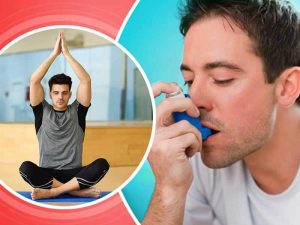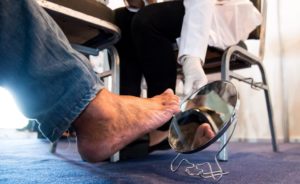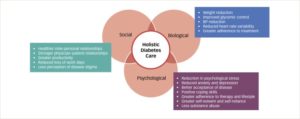Help Relieve Asthma Symptoms with Yoga
By John M. de Castro, Ph.D.
“Yoga can help increase breath and body awareness, slow your respiratory rate, and promote calm and relieve stress — all of which are beneficial for people who have asthma.” – Judi Bar
Asthma is a chronic disease of the lungs that involves a persistent inflammation of the airways. When the inflammation worsens, it makes it more difficult for air to move in and out of the lungs provoking coughing, wheezing, shortness of breath and chest tightness. It is estimated that 300 million people worldwide and 30 million people in the U.S. suffer from asthma and the incidence appears to be growing. In the U.S.it is estimated to cost $60 billion per year in healthcare costs and lost productivity. Asthma is the most common chronic disease in the world among children with about 10% of children suffering from asthma.
Asthma is not fatal and those with moderate asthma have an equivalent life expectancy to those that don’t. There is no cure for asthma. So, it is a chronic disease that must be coped with throughout the lifetime. Treatments are aimed at symptomatic relief. Most frequently drugs, anti-inflammatory hormones, and inhalers are used to help control the inflammation. Exercise can be difficult with asthma and may actually precipitate an attack. This can be a problem as maintaining fitness with asthma can be difficult. A relatively gentle form of exercise, yoga practice can be practiced without heavy breathing and thus may not provoke asthma. In addition, breathing exercises like those incorporated into yoga practice are known to help control asthma. This suggests that yoga practice may be a helpful exercise for people with asthma.
In today’s Research News article “Yoga for asthma.” (See summary below or view the full text of the study at: https://www.ncbi.nlm.nih.gov/pmc/articles/PMC6880926/), Yang and colleagues review, summarize, and perform a meta-analysis of the effectiveness of yoga practice for the treatment of asthma. They found 15 randomized controlled trials (RCTs).
They report that the research found that yoga practice produced a significant improvement in the asthma patients’ symptoms, control of asthma, and quality of life and a significant reduction in asthma medication use. In terms of lung function, the research found that yoga practice produced significant improvements in forced vital capacity and peak expiratory flow rate.
Hence, yoga practice appears to be beneficial for asthma patients, improving lung function, asthma symptoms, drug use, and improving the patient’s quality of life. There were no recorded adverse events associated with the yoga practice. This is important as exercise is often difficult for asthma patients. Yoga practice appears to be feasible and well tolerated and beneficial for asthma patients.
So, help relieve asthma symptoms with yoga.
“Having asthma means it can be a struggle to breathe properly, but yoga involves learning how to breathe deeply in and out through the nose to filter the air, and find a natural, balanced breathing pattern. Over time this helps to increase lung capacity and gives you more control of your breathing day-to-day.” – Julia White
CMCS – Center for Mindfulness and Contemplative Studies
This and other Contemplative Studies posts are also available on Google+ https://plus.google.com/106784388191201299496/posts and on Twitter @MindfulResearch
Study Summary
Yang, Z. Y., Zhong, H. B., Mao, C., Yuan, J. Q., Huang, Y. F., Wu, X. Y., … Tang, J. L. (2016). Yoga for asthma. The Cochrane database of systematic reviews, 4(4), CD010346. doi:10.1002/14651858.CD010346.pub2
Abstract
Background
Asthma is a common chronic inflammatory disorder affecting about 300 million people worldwide. As a holistic therapy, yoga has the potential to relieve both the physical and psychological suffering of people with asthma, and its popularity has expanded globally. A number of clinical trials have been carried out to evaluate the effects of yoga practice, with inconsistent results.
Objectives
To assess the effects of yoga in people with asthma.
Search methods
We systematically searched the Cochrane Airways Group Register of Trials, which is derived from systematic searches of bibliographic databases including the Cochrane Central Register of Controlled Trials (CENTRAL), MEDLINE, EMBASE, CINAHL, AMED, and PsycINFO, and handsearching of respiratory journals and meeting abstracts. We also searched PEDro. We searched ClinicalTrials.gov and the WHO ICTRP search portal. We searched all databases from their inception to 22 July 2015, and used no restriction on language of publication. We checked the reference lists of eligible studies and relevant review articles for additional studies. We attempted to contact investigators of eligible studies and experts in the field to learn of other published and unpublished studies.
Selection criteria
We included randomised controlled trials (RCTs) that compared yoga with usual care (or no intervention) or sham intervention in people with asthma and reported at least one of the following outcomes: quality of life, asthma symptom score, asthma control, lung function measures, asthma medication usage, and adverse events.
Data collection and analysis
We extracted bibliographic information, characteristics of participants, characteristics of interventions and controls, characteristics of methodology, and results for the outcomes of our interest from eligible studies. For continuous outcomes, we used mean difference (MD) with 95% confidence interval (CI) to denote the treatment effects, if the outcomes were measured by the same scale across studies. Alternatively, if the outcomes were measured by different scales across studies, we used standardised mean difference (SMD) with 95% CI. For dichotomous outcomes, we used risk ratio (RR) with 95% CI to measure the treatment effects. We performed meta‐analysis with Review Manager 5.3. We used the fixed‐effect model to pool the data, unless there was substantial heterogeneity among studies, in which case we used the random‐effects model instead. For outcomes inappropriate or impossible to pool quantitatively, we conducted a descriptive analysis and summarised the findings narratively.
Main results
We included 15 RCTs with a total of 1048 participants. Most of the trials were conducted in India, followed by Europe and the United States. The majority of participants were adults of both sexes with mild to moderate asthma for six months to more than 23 years. Five studies included yoga breathing alone, while the other studies assessed yoga interventions that included breathing, posture, and meditation. Interventions lasted from two weeks to 54 months, for no more than six months in the majority of studies. The risk of bias was low across all domains in one study and unclear or high in at least one domain for the remainder.
There was some evidence that yoga may improve quality of life (MD in Asthma Quality of Life Questionnaire (AQLQ) score per item 0.57 units on a 7‐point scale, 95% CI 0.37 to 0.77; 5 studies; 375 participants), improve symptoms (SMD 0.37, 95% CI 0.09 to 0.65; 3 studies; 243 participants), and reduce medication usage (RR 5.35, 95% CI 1.29 to 22.11; 2 studies) in people with asthma. The MD for AQLQ score exceeded the minimal clinically important difference (MCID) of 0.5, but whether the mean changes exceeded the MCID for asthma symptoms is uncertain due to the lack of an established MCID in the severity scores used in the included studies. The effects of yoga on change from baseline forced expiratory volume in one second (MD 0.04 litres, 95% CI ‐0.10 to 0.19; 7 studies; 340 participants; I2 = 68%) were not statistically significant. Two studies indicated improved asthma control, but due to very significant heterogeneity (I2 = 98%) we did not pool data. No serious adverse events associated with yoga were reported, but the data on this outcome was limited.
Authors’ conclusions
We found moderate‐quality evidence that yoga probably leads to small improvements in quality of life and symptoms in people with asthma. There is more uncertainty about potential adverse effects of yoga and its impact on lung function and medication usage. RCTs with a large sample size and high methodological and reporting quality are needed to confirm the effects of yoga for asthma.
https://www.ncbi.nlm.nih.gov/pmc/articles/PMC6880926/









